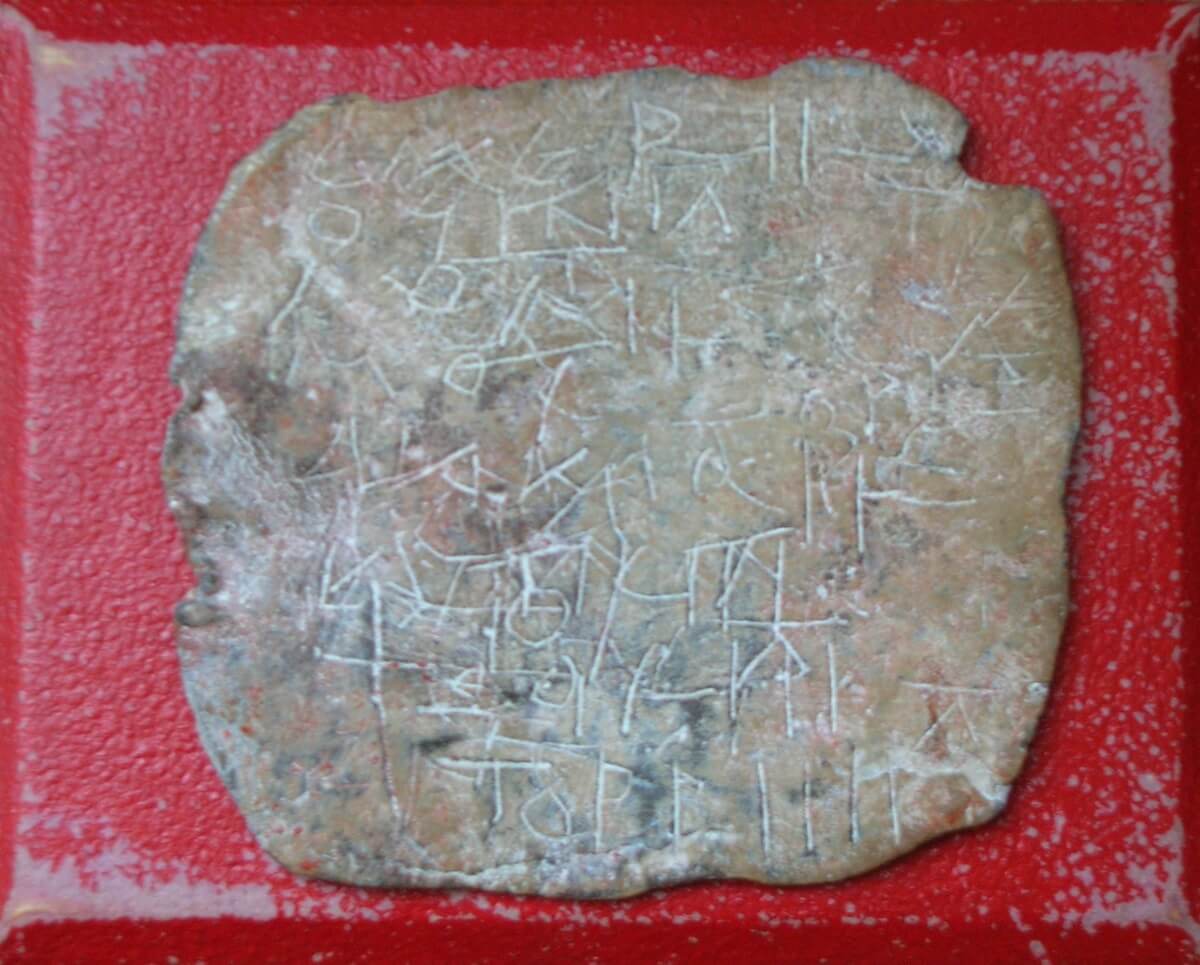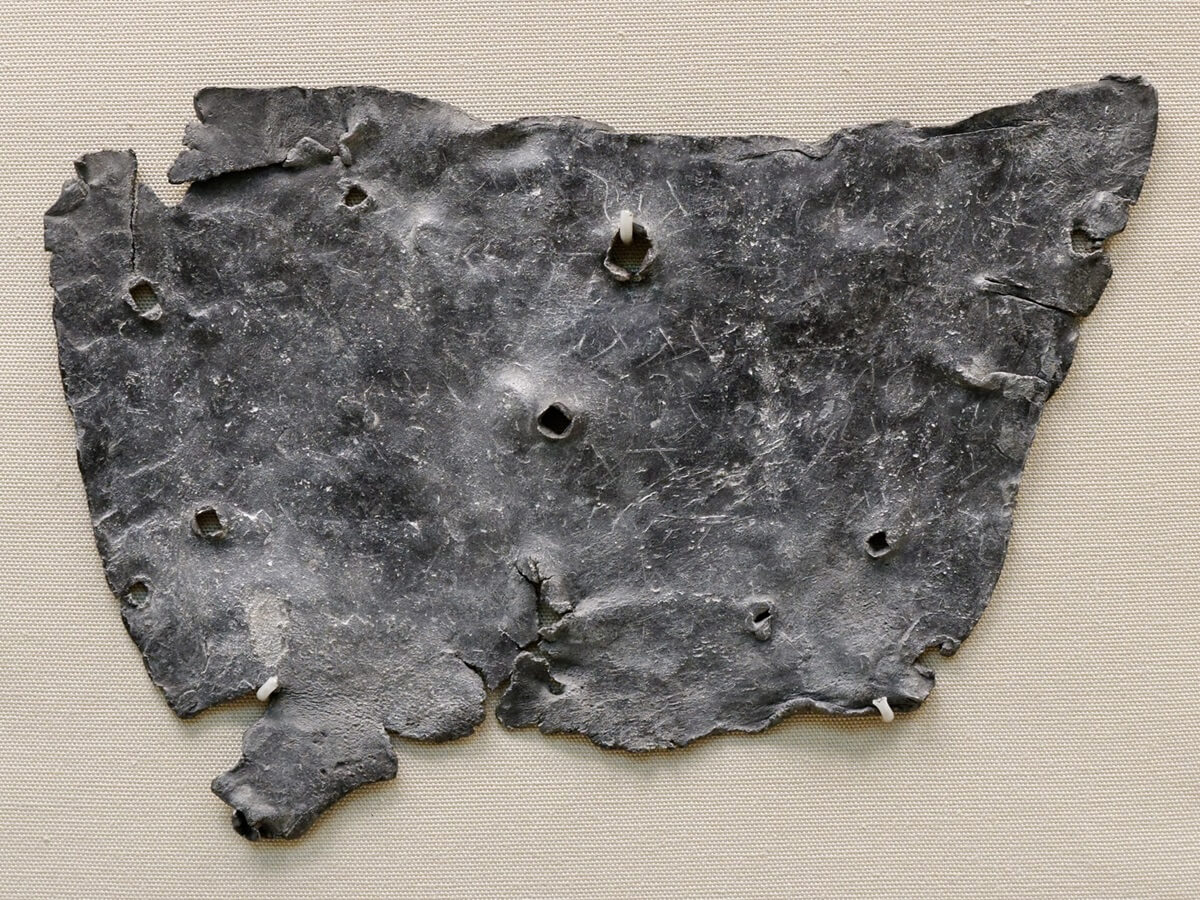Roman curse tablets, known as defixiones, were small, inscribed sheets of metal that were used in the ancient Greco-Roman world to curse or bind individuals, often stemming from motives such as jealousy, revenge, or competition.
These tablets were typically etched into thin sheets of lead or pewter, and would carry inscriptions requesting divine intervention regarding justice or retribution. Lead was a material accessible enough to not be prohibitive, yet valuable enough to be considered a worthy offering.
It is also quite resistant to corrosion and weathering, which would have been an important consideration in terms of providing a feeling that the curse will last a long time wherever the curse tablet is placed. Occasionally, they were also inscribed on other metals, pottery or stone.

Photograph by Mike Peel (www.mikepeel.net)., CC BY-SA 4.0, via Wikimedia Commons
An ancient Roman curse tablet found at the Roman baths in Bath, England
The inscriptions, predominantly written in Latin or Greek, would detail not only the curse but often the name of the person to be cursed and the requested punishment. The writing itself was commonly executed in tiny, careful scripts, signifying the seriousness with which these requests were made and the gravity of the ritual act.
The practice of creating curse tablets dates back to at least the 5th century BC and continued for many centuries. Most tablets were intended to be read by the gods alone and were often deposited in places considered to be portals to the divine, such as graves, sacred springs, and temples.
Curse tablets found near the site of the Roman baths in the town of Bath, England, for example, were dedicated to the goddess Sulis Minerva, predominantly hoping for the recovery of stolen items and the punishment of thieves.
These tablets offer modern historians a unique glimpse into the personal grievances and desires for vengeance among ordinary people in Roman society, and have been instrumental in understanding the daily lives and spiritual practices of individuals in the ancient world, allowing scholars to piece together the ethics, superstitions, and social dynamics of the Roman Empire.
While scholars have unearthed these tablets from various regions, they share similar characteristics, such as the method of creating the tablet, the type of language used, and the deities invoked, depicting a uniform approach to cursing which permeated different levels of society.
Superstition and Magic
Curse tablets provide evidence of the relationship between superstition and Roman religion. Their use often intertwined with religious ritual, hinting at an accepted overlap between the official state religion and private magical practices. These artifacts highlight a prevalent belief of the time: that supernatural forces could be petitioned to control or harm others, or influence various aspects of daily life. This practice was not confined solely to Rome but was widespread in Greece and across the Roman Empire.

Curse tablet of Eyguiéres (Bouches-du-Rhône)
Incidents of theft were common in Roman cities, and the protection of personal property was a significant concern for citizens. Curse tablets related to theft and loss document instances where individuals named suspected thieves, describing the stolen items in detail. These objects could range from clothing to jewelry such as rings, or even animals.
The act of inscribing a curse tablet itself may have provided the victim with a sense of taking proactive steps toward restitution... Curse tablets were often used when legal options were limited, or when individuals felt that earthly justice was inadequate.
Roman curse tablets often capture the vernacular Latin used by different social strata, preserving words and phrases that might not be found in more formal literature. The careful study of the inscriptions unveils how curses were structured and leveraged the power of names and deities in their petitions to supernatural forces.
At times, the curse was a more indiscriminate plea for action against a group, such as a professional body or a social faction, reflecting broader tensions.
Health and Wellness
Concerns around health and personal well-being are reflected in the texts of many curse tablets. They were used to invoke harm or seek revenge, often wishing illness or even death upon the target. Phrases requesting that the recipient's blood be bound (symbolically restricting their life force or vitality), or that their health deteriorate, were common.
It is also indicative of how health issues were perceived; not always as natural occurrences or the results of a person's lifestyle choices, but solely as the result of malevolent supernatural forces or the ill-will of adversaries.

A Roman curse tablet found in London, England. The inscription reads "I curse Tretia Maria and her life and mind and memory and liver and lungs mixed up together, and her words, thoughts and memory; thus may she be unable to speak what things are concealed."
The "Ring of Silvianus"
This Roman-era artifact offers a fascinating example of the use of curse tablets in ancient times. Discovered in England, this gold ring is related to a curse tablet that invokes divine retribution upon the person who stole it. The inscription on the tablet, written in Latin, calls upon a deity to bring misfortune to the thief until the ring is returned.
Interestingly, the "Ring of Silvianus" is also linked to the renowned author J.R.R. Tolkien. It is believed that this ancient artifact inspired Tolkien's creation of the "One Ring" in his legendary Middle-earth saga.
The story of the ring and its associated curse tablet highlights the cultural and historical influences that shaped Tolkien's imaginative world. This connection underscores how ancient practices and artifacts continue to resonate in modern literature and popular culture.
For more details on this fascinating artifact and its possible influence on Tolkien, you can visit Ripley's article on the Ring of Silvianus.



